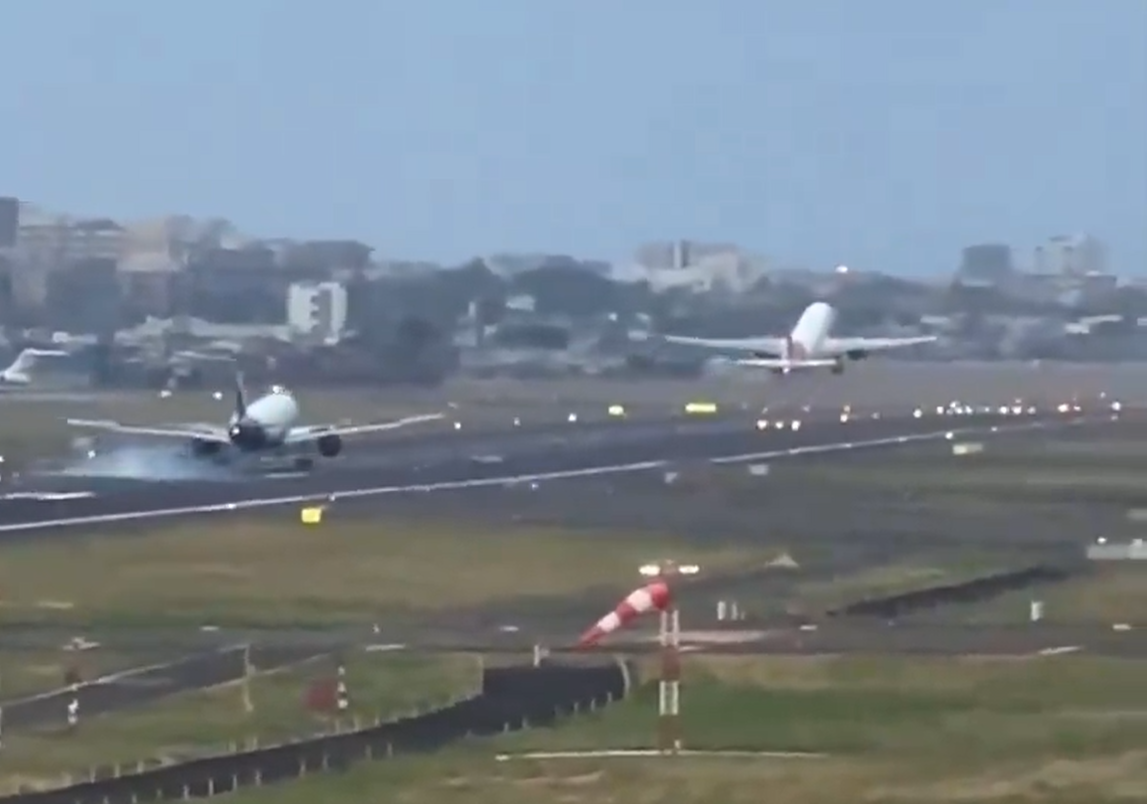India’s Directorate General of Civil Aviation (DGCA) is investigating a near-miss incident involving an IndiGo and an Air India Airbus A320neo at Chhatrapati Shivaji Maharaj International Airport (BOM) on June 8, 2024.
The incident, captured on video and widely shared on social media, involved IndiGo flight 6E-5053 from Indore landing on Runway 27 as Air India flight AI-657 took off from the same runway.
According to ADS-B data, the IndiGo aircraft was approximately 1.75 nautical miles short of the runway threshold and 600 feet above ground level when the Air India aircraft reached the lined-up position on the runway.
The Air India aircraft became airborne just before the IndiGo aircraft touched down, with a horizontal distance remaining of approximately 0.35 nautical miles.
The DGCA has de-rostered an Air Traffic Controller involved in the incident. Both airlines reported the incident and stated that their pilots followed ATC instructions.
“IndiGo flight 6E 6053 from Indore was given landing clearance by ATC at Mumbai Airport. The Pilot in Command continued the approach and landing and followed ATC instructions,” said an IndiGo spokesperson.
“At IndiGo, passenger safety is paramount to us, and we have reported the incident as per procedure.”
Air India also issued a statement, stating, “AI657 from Mumbai to Trivandrum was on take-off roll on June 8. The Air India aircraft was cleared by Air Traffic Control to enter the runway and subsequently cleared for take-off.”
“The Air India aircraft continued with the take-off movement in accordance with laid down procedures. An investigation has been initiated by the authorities to find out more on the clearance given to the airlines,” the statement continued.
While some have expressed concern about a potential safety lapse, aviation experts, including Captain Shakti Lumba on X, point out that Mumbai Airport operates with a high-intensity runway system (HIRO) and has a low prescribed minimum distance between aircraft under certain conditions.
“The video makes the aircraft appear very close as the video is shot from an angle (probably near the hutments next to threshold of runway 27), however in reality the airplanes are well separated,” he said.
Lumba cautions against drawing conclusions solely based on the viral video.
“This is HIRO (High Intensity Runway Ops). Followed in many countries including India when visibility is more than 3 kms and tailwind less than 5 kts,” he added.
Minimum separation standards
The ICAO’s PANS-ATM Document 4444 lays out detailed procedures for the separation of departing and arriving aircraft, including specific wake turbulence separation minima based on aircraft categories (Heavy, Medium, and Light).
The document also outlines standards for horizontal separation when surveillance systems are used, specifically based on radar, ADS-B, or Multilateration (MLAT).
When surveillance systems are used, the minimum separation prescribed by ICAO Doc 4444 is 5 nm, unless otherwise stated by the appropriate Air Traffic Service (ATS) authority.
This minimum may be reduced by the authority, but not below 3 nm when the surveillance systems’ capabilities at a given location permit this, or 2.5 nm between succeeding aircraft which are established on the same final approach track within 10 nm of the runway threshold.
A number of additional criteria must be met in order to apply this 2.5 nm separation minimum, which are described in detail in ICAO Doc 4444, 8.7.3.2 b).
The separation minimum or minima based on radar and/or ADS-B and/or MLAT systems to be applied are prescribed by the appropriate ATS authority based on the equipment used.
Therefore, higher than 5 nm horizontal separation minima may be applied in certain parts of the airspace and/or at certain times.
The DGCA investigation is expected to focus on whether the air traffic controller and pilots acted within the limitations of the prescribed norms, as well as any potential contributing factors to the near-miss.
Source: The Aviation Herald, Simple Flying, The Indian Express, SKYbrary





















Leave a comment